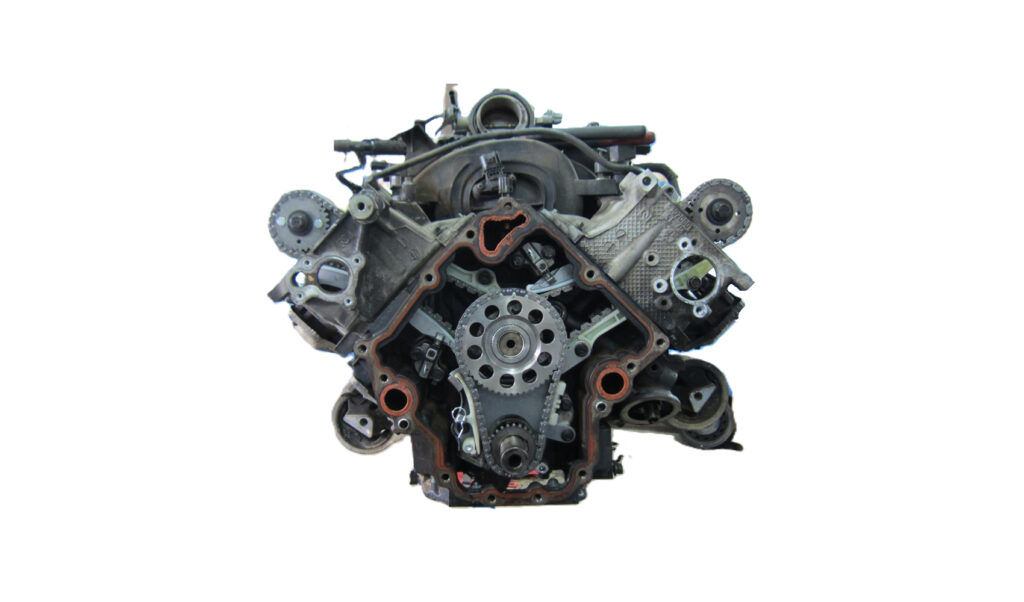Q: Where Is the Timing Chain Located?
The timing chain is responsible for connecting your vehicle’s crankshaft to the valvetrain or camshafts.
On most engines, the timing chain is usually located on the same end of the engine where the drive belts and pulleys are located. This will be the front of the engine on a linear mounted engine but it could be either the left or the right end of a transverse mounted engine, depending on the platform.

The timing chain’s location varies from engine to engine, and some engines have more than one timing chain. 4.0.L single overhead cam (SOHC) Explorers (1997-2010), for example, have one timing chain that drives a jackshaft. This jackshaft drives two timing chains: one that spins the bank 2 camshaft by a gear that is bolted to the front of the driver’s side head, and a different timing chain that spins an identical cam gear bolted to the rear of the camshaft on passenger side head driving the bank 1 camshaft.
Most older engines had timing chains, then belts became a thing. Now, timing chains are making a comeback, albeit with a different configuration since most engines have at least one camshaft in each cylinder head rather than in the engine block as in days of old. Many engines have two camshafts in each head.

Tips on How to Access the Timing Chain
Accessing the timing chain is a labor-intensive process since there are many components along the way. The timing chain is typically located near components like the serpentine belt or the drive belt, which transfers power from the engine to components like the A/C compressor, power steering pump, and starter.
If you’re trying to access the timing chain on a 1997 to 2003 Ford F-150, you’ll need to remove the radiator fan, serpentine belt, and pulleys, which connect to components like the power steering pump. You’ll also need to remove the aluminum timing chain cover.
The intake manifold and intake hose are also directly above most engines, so you might also need to remove them to access this part. Lastly, the timing chain on many vehicles has a timing chain cover that protects it from debris, so you’ll need to remove this as well.
Any information provided on this Website is for informational purposes only and is not intended to replace consultation with a professional mechanic. The accuracy and timeliness of the information may change from the time of publication.































